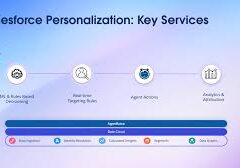Rural healthcare providers have long grappled with challenges due to their geographic isolation and limited financial resources. The advent of digital health transformation, however, has introduced a new set of IT-related obstacles for these providers.
EHR Adoption and New IT Challenges
While federal legislation has successfully promoted Electronic Health Record (EHR) adoption across both rural and urban healthcare organizations, implementing an EHR system is only one component of a comprehensive health IT strategy.
Rural healthcare facilities encounter numerous IT barriers, including inadequate infrastructure, interoperability issues, constrained resources, workforce shortages, and data security concerns.
Limited Broadband Access
Broadband connectivity is essential for leveraging health IT effectively. However, there is a significant disparity in broadband access between rural and urban areas. According to a Federal Communications Commission (FCC) report, approximately 96% of the U.S. population had access to broadband at the FCC’s minimum speed benchmark in 2019, compared to just 73.6% of rural Americans.
The lack of broadband infrastructure hampers rural organizations’ ability to utilize IT features that enhance care delivery, such as electronic health information exchange (HIE) and virtual care. Rural facilities, in particular, rely heavily on HIE and telehealth to bridge gaps in their services. For instance, HIE facilitates data sharing between smaller ambulatory centers and larger academic medical centers, while telehealth allows rural clinicians to consult with specialists in urban centers. Additionally, telehealth can help patients in rural areas avoid long travel distances for care. However, without adequate broadband access, these services remain impractical.
Despite persistent disparities, the rural-urban broadband gap has narrowed in recent years. Data from the FCC indicates that since 2016, the number of people in rural areas without access to 25/3 Mbps service has decreased by more than 46%. Various programs, including the FCC’s Rural Health Care Program and USDA funding initiatives, aim to expand broadband access in rural regions.
Interoperability Challenges
While HIE adoption is rising nationally, rural healthcare organizations lag behind their urban counterparts in terms of interoperability capabilities, as noted in a 2023 GAO report. Data from a 2021 American Hospital Association survey revealed that rural hospitals are less likely to engage in national or regional HIE networks compared to medium and large hospitals.
Rural providers often lack the economic and technological resources to participate in electronic HIE networks, leading them to rely on manual data exchange methods such as fax or mail. Additionally, rural providers are less likely to join EHR vendor networks for data exchange, partly due to the fact that they often use different systems from those in other local settings, complicating health data exchange.
Federal initiatives like TEFCA aim to improve interoperability through a network of networks approach, allowing organizations to connect to multiple HIEs through a single connection. However, TEFCA’s voluntary participation model and persistent barriers such as IT staffing shortages and broadband gaps still pose challenges for rural providers.
Financial Constraints
Rural hospitals often operate with slim profit margins due to lower patient volumes and higher rates of uninsured or underinsured patients. The financial strain is exacerbated by declining Medicare and Medicaid reimbursements. According to KFF, the median operating margin for rural hospitals was 1.5% in 2019, compared to 5.2% for other hospitals.
With limited budgets, rural healthcare organizations struggle to invest in advanced health IT systems and the necessary training and maintenance. Many small rural hospitals are turning to cloud-based EHR platforms as a cost-effective solution. Cloud-based EHRs reduce the need for substantial upfront hardware investments and offer monthly subscription fees, some as low as $100 per month.
Workforce Challenges
The healthcare sector is facing widespread staff shortages, including a lack of skilled health IT professionals. Rural areas are disproportionately affected by these shortages. An insufficient number of IT specialists can impede the adoption and effective use of health IT in these regions.
To address workforce gaps, the ONC suggests strategies such as cross-training multiple staff members in health IT functions and offering additional training opportunities. Some networks, like OCHIN, have secured grants to develop workforce programs, but limited broadband access can hinder participation in virtual training programs, highlighting the need for expanded broadband infrastructure.
Data Security Concerns
Healthcare data breaches have surged, with a 256% increase in large breaches reported to the Office for Civil Rights (OCR) over the past five years. Rural healthcare organizations, often operating with constrained budgets, may lack the resources and staff to implement robust data security measures, leaving them vulnerable to cyber threats.
A cyberattack on a rural healthcare organization can disrupt patient care, as patients may need to travel significant distances to reach alternative facilities. To address cybersecurity challenges, recent legislative efforts like the Rural Hospital Cybersecurity Enhancement Act aim to develop comprehensive strategies for rural hospital cybersecurity and provide educational resources for staff training.
In the interim, rural healthcare organizations can use free resources such as the Health Industry Cybersecurity Practices (HICP) publication to guide their cybersecurity strategies, including recommendations for managing vulnerabilities and protecting email systems.
Does your practice need help meeting these challenges? Contact Tectonic today.













